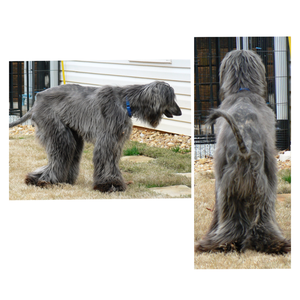Dedicated in loving memory of Rigel - the blue star Afghan - may his star burn brightly.
Many understand the "need for canine health testing". People will dutifully test their dog’s hips, eyes (CERF exam), maybe elbows, thyroid, knees and the one DNA test for the BIG recessive genetic disease that has been known to exist in their breed for years. This sequence is what they have been taught that they must do to be a responsible breeder by the forefathers in their breed clubs. But how much do people really understand the need for genetic testing?
What about uncommon genetic disease in the breed? Every individual carries recessive non-working or disease genes; many of which are uncommon and can run silently in the family for generations before two carriers are bred together and produce affected puppies. It has often been touted that one reason for inbreeding is to identify and weed out recessive disorders, but how often is this actually done? If the problem is uncommon and unknown, affected individuals, especially those that die young, can go undiagnosed, especially if each and every puppy is not extensively evaluated. So the problem occurs unrecognized, unidentified and ...









